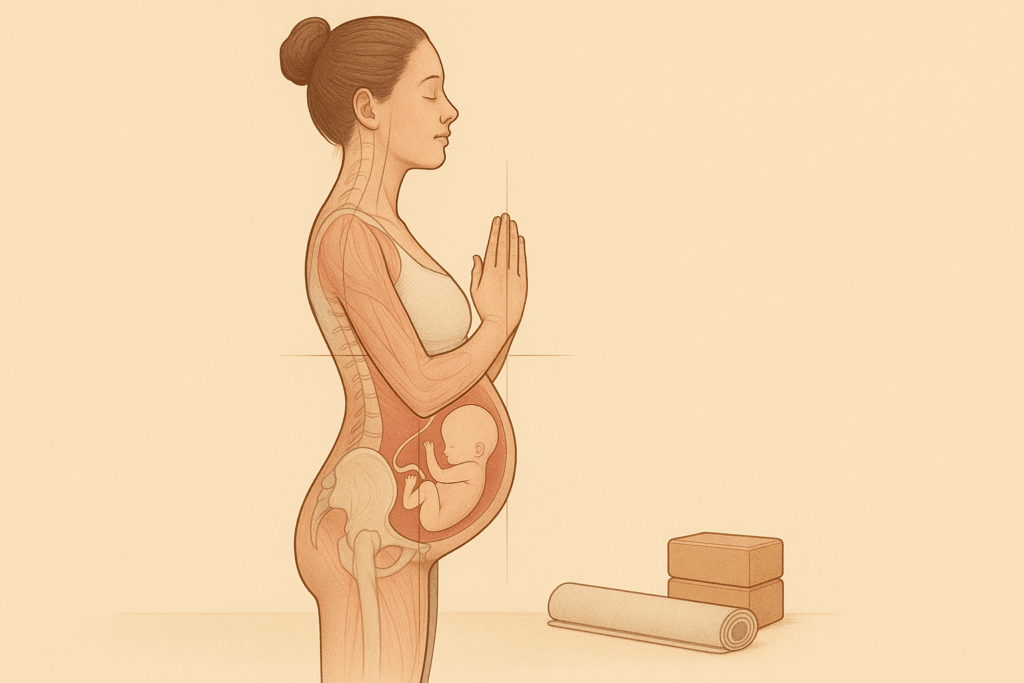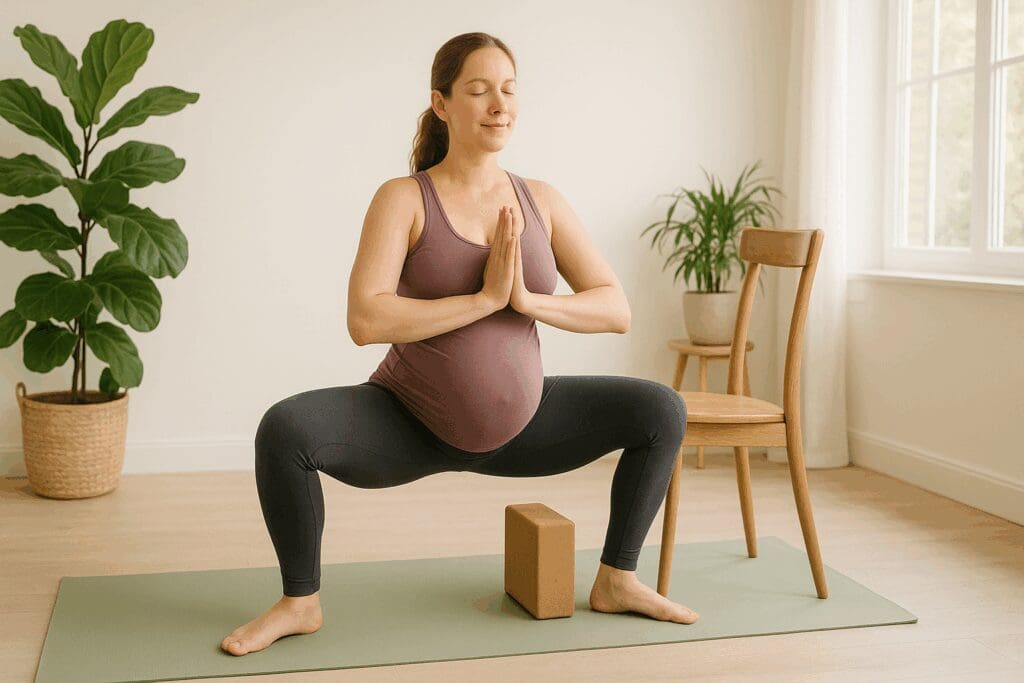As the second trimester unfolds, many pregnant individuals experience a noticeable shift in energy levels and physical comfort. After the often exhausting and queasy weeks of the first trimester, this middle stage of pregnancy is often referred to as the “honeymoon phase” for a reason—it brings with it a resurgence of vitality and a deepening connection to the changes occurring in the body. At this pivotal point, yoga for second trimester wellness emerges not only as a gentle physical practice but as a holistic tool for emotional resilience, flexibility, and inner calm.
The practice of second trimester yoga is uniquely tailored to accommodate the anatomical, hormonal, and emotional changes experienced during weeks 13 to 27 of pregnancy. Unlike generic fitness routines, preggo yoga offers a nurturing space that integrates breathwork, mindful movement, and intentional relaxation. It’s not simply about staying active—it’s about tuning in to your evolving body and empowering yourself with tools that foster strength and serenity. When approached with care, prenatal yoga second trimester sessions can offer profound benefits ranging from improved circulation and reduced back pain to enhanced pelvic floor awareness and mental clarity.
For many expectant individuals, especially those exploring movement after the first-trimester fatigue, yoga becomes a cornerstone of maternity wellness. This article explores the essential poses, modifications, safety considerations, and emotional benefits of yoga during the second trimester. Through expert insights and evidence-based practices, we’ll uncover why this ancient discipline holds such transformative potential for modern prenatal care and how it can become a powerful ally for physical and emotional vitality throughout pregnancy and beyond.
You may also like: The Ultimate Guide to Safe and Effective Pregnant Yoga Classes for Expecting Moms

Understanding the Second Trimester: A New Landscape for Movement
The second trimester marks a dynamic phase in pregnancy. Physically, the uterus expands significantly, leading to a visible baby bump and corresponding shifts in posture and weight distribution. Hormones like relaxin, which facilitate joint and ligament flexibility, are now in full effect, preparing the body for childbirth. While this increased flexibility may seem advantageous, it also makes pregnant individuals more susceptible to overstretching or joint instability if movements are not performed mindfully.
Emotionally and mentally, many people report a renewed sense of optimism and clarity during this period. Morning sickness typically subsides, energy levels improve, and the risk of miscarriage decreases. These factors make the second trimester an opportune time to establish or deepen a yoga practice tailored to pregnancy’s evolving demands.
From a physiological perspective, however, care must be taken to ensure that exercise routines do not compress the abdomen, strain the lower back, or interfere with venous return from the legs. Positions that once felt familiar may now require props, modifications, or substitution altogether. This is where second trimester yoga truly shines—its inherent adaptability makes it possible to meet the body exactly where it is.
Yoga for 2nd trimester flexibility and stability also supports improved blood circulation, better digestion, and reduced swelling in the feet and ankles. Deep diaphragmatic breathing calms the nervous system and prepares the body for labor by encouraging oxygen-rich blood flow. All of these benefits combine to enhance not just physical wellness but the overall sense of empowerment and groundedness that characterizes mindful maternity practices.

Why Yoga for Second Trimester Is a Critical Prenatal Wellness Tool
During the second trimester, the body’s center of gravity shifts forward as the uterus enlarges and the abdominal muscles stretch to accommodate the growing fetus. This natural transformation places extra strain on the lumbar spine, hips, and pelvic floor, which can lead to discomfort or imbalance if not proactively managed. Engaging in a consistent prenatal yoga second trimester regimen helps counter these shifts through targeted movement, alignment, and core support.
One of the most powerful aspects of preggo yoga lies in its ability to provide both physical and emotional relief in a gentle, accessible manner. Unlike high-impact exercises that may pose risks or feel too demanding during pregnancy, yoga allows for fluid, intentional movements that strengthen without straining. Poses such as Cat-Cow, Warrior II, and supported Goddess pose allow expectant individuals to build endurance and stability while staying attuned to their body’s boundaries.
Equally important are the breathing techniques taught in prenatal yoga. Conscious breathwork—especially forms such as ujjayi and alternate nostril breathing—supports parasympathetic nervous system activation. This leads to lower stress levels, enhanced oxygenation for both mother and baby, and a greater capacity to manage the emotional fluctuations that often accompany pregnancy.
Mentally, yoga for second trimester energy and comfort provides a rare and invaluable opportunity for introspection. Each class becomes a sanctuary where mothers-to-be can pause, reflect, and prepare for the journey ahead. Whether practiced at home or in a studio setting, prenatal yoga offers a rhythmic sense of connection—to self, to baby, and to the broader rhythm of new life unfolding.

Safe and Effective Modifications for Second Trimester Yoga Practice
One of the most critical considerations during any form of second trimester yoga is the need for anatomical awareness and pose modification. While yoga remains largely safe and beneficial during this period, certain postures must be adapted to reflect the body’s ongoing changes. For example, deep twists, belly-down postures, and inversions should generally be avoided or approached with extreme caution due to their potential impact on circulation or abdominal pressure.
Instead, the focus should shift toward open, grounded movements that create space in the pelvis and hips without overexertion. Standing poses like Triangle and Warrior I can be modified by widening the stance or using a wall for support. Seated forward folds should be done with a bolster or folded blanket to reduce abdominal compression, while supine positions after week 20 should be replaced with side-lying alternatives to maintain optimal blood flow and avoid compressing the inferior vena cava.
Additionally, the use of yoga props such as blocks, straps, bolsters, and blankets becomes essential during this stage. These tools not only enhance comfort but also make it easier to maintain correct alignment and prevent joint strain. Supported poses like Reclined Bound Angle with a bolster or Legs-Up-the-Wall with a slight elevation for the hips offer restorative benefits while reducing lower body fatigue.
Crucially, each practitioner must learn to listen to their body’s cues and avoid any position that causes discomfort, dizziness, or excessive exertion. Yoga for 2nd trimester comfort is not about performance—it’s about fostering a loving, respectful relationship with the body in its transitional state. By embracing this mindset, individuals can experience both immediate physical relief and lasting emotional resilience throughout their pregnancy journey.

Breathwork and Mindfulness: Foundations of Second Trimester Yoga
Breath is the silent rhythm that guides every movement in yoga, and during pregnancy, it takes on a profound new significance. In the second trimester, breathwork—or pranayama—becomes a bridge between the physiological and the emotional, helping expectant individuals remain grounded in the present while preparing for the intensity of labor and childbirth.
Ujjayi breath, known for its soft, oceanic sound and calming effect, is especially valuable during prenatal yoga second trimester practice. It encourages longer, deeper inhalations and exhalations, which support cardiovascular health, oxygenate the blood, and calm the mind. Alternate nostril breathing offers additional benefits by balancing the hemispheres of the brain and reducing anxiety, which is often heightened by hormonal fluctuations during pregnancy.
Beyond technique, the act of consciously breathing through each movement fosters mindfulness. Rather than rushing through poses or focusing on outcomes, individuals are encouraged to slow down and notice the sensations, emotions, and shifts occurring within. This self-awareness becomes a powerful ally, not only for physical comfort but also for developing emotional flexibility and patience—qualities that are invaluable during labor and early motherhood.
Incorporating breath-based meditations at the start or end of a yoga session can further deepen this connection. Whether through guided visualizations, affirmations, or simple breath awareness, these practices cultivate a sense of spaciousness that carries over into daily life. They offer a reprieve from the overstimulation of modern life and a return to the innate wisdom of the body.
Mindfulness through yoga for second trimester balance and breath cultivates inner calm and enhances resilience. In an era where maternity often feels medicalized or disempowering, this return to breath and presence is a quiet act of self-empowerment—a reminder that the most powerful tools for wellness often lie within.
Strength and Stability: Building Support with Yoga for Second Trimester Comfort
As the belly grows and weight redistributes across the body, maintaining physical stability becomes increasingly important during the second trimester. A well-crafted yoga practice for this stage helps reinforce essential muscle groups, particularly in the legs, back, and core, which are tasked with bearing and balancing the changing load. Prenatal yoga second trimester sequences often emphasize building slow, sustained strength without overtaxing already taxed joints or ligaments.
One area that receives considerable attention in second trimester yoga is the pelvic floor. This intricate network of muscles supports the uterus, bladder, and bowels and plays a pivotal role in labor and postpartum recovery. Poses like Bridge (Setu Bandhasana) with a bolster or Squat (Malasana) with wall support gently activate these muscles without creating excessive intra-abdominal pressure. These movements not only build muscular awareness but also help improve circulation and reduce pelvic congestion—a common discomfort in later stages of pregnancy.
Back strengthening is equally critical, especially as the lumbar spine accommodates increased anterior weight. Gentle backbends such as supported Camel or Sphinx pose can counteract common postural issues like lordosis and promote spinal integrity. When performed mindfully and with the aid of props, these postures provide much-needed relief from low back tightness and discomfort.
In addition to muscular stability, yoga for second trimester energy and endurance nurtures a sense of groundedness that becomes emotionally stabilizing. Balancing poses like Tree or Warrior III can be adapted with chair or wall support, offering both a physical and metaphorical lesson in equilibrium. These asanas cultivate focus and confidence—qualities that extend far beyond the yoga mat and into daily life.
Ultimately, second trimester yoga does more than prepare the body for childbirth; it empowers individuals with the strength and stability needed to meet the challenges and beauty of each pregnancy stage with grace and resilience.
Emotional Wellness and Prenatal Bonding Through Preggo Yoga
Pregnancy is not only a physical transformation but a deeply emotional and psychological journey. Amid hormonal fluctuations, shifting identities, and mounting expectations, it’s easy for expectant individuals to feel overwhelmed or disconnected. Preggo yoga provides a sanctuary for emotional recalibration, allowing mothers-to-be to reconnect with themselves and their growing babies through intentional movement and breath.
One of the most profound aspects of prenatal yoga second trimester practice is its capacity to foster maternal-fetal bonding. During yoga, placing the hands on the belly during seated or supine poses can create a tactile and emotional connection to the baby. This simple act, when coupled with deep breathing, helps enhance awareness of the life within and supports the development of maternal identity.
Furthermore, second trimester yoga offers a gentle outlet for processing the complex emotions that often surface during pregnancy. Whether it’s anxiety about labor, concern over lifestyle changes, or the weight of external expectations, yoga provides a structured, nurturing environment in which to hold and release these feelings. Gentle heart-openers like Supported Fish or reclining poses with props can elicit emotional release, while affirmations silently repeated during poses help build confidence and compassion.
Group prenatal yoga classes also serve as a supportive community space where expectant individuals can share experiences, ask questions, and feel seen. This social support network reduces feelings of isolation and offers reassurance that others are navigating similar challenges and triumphs. Such connection is invaluable in a time when traditional support structures may be limited or inconsistent.
Even in solo practice, the meditative and emotionally attuned nature of yoga for 2nd trimester self-care invites a deeper dialogue with the inner self. This awareness fosters resilience, self-compassion, and emotional preparedness for the road ahead—qualities that enrich not only pregnancy but the broader motherhood journey.
Best Practices and Cautions for Safe Second Trimester Yoga
Safety is the cornerstone of any successful prenatal wellness regimen, and yoga is no exception. While second trimester yoga is generally considered safe for most pregnancies, a few key guidelines ensure that the practice supports rather than strains the body. Understanding these precautions allows for an empowering and low-risk yoga experience that honors both mother and child.
First and foremost, any new exercise routine during pregnancy should be cleared with a healthcare provider. Even experienced yogis must recognize that their body is undergoing rapid and significant changes, and previous capabilities may no longer apply. If the pregnancy is high-risk or if symptoms like dizziness, vaginal bleeding, or severe discomfort occur, practice should be paused and medical guidance sought.
Poses that compress the abdomen or place pressure on the belly, such as deep forward folds or belly-down backbends, should be avoided or heavily modified. As pregnancy progresses, the supine position (lying flat on the back) may impede blood flow to the fetus due to pressure on the inferior vena cava, making side-lying poses a safer alternative. Inversions such as headstands or shoulder stands, while safe for some experienced practitioners, are best omitted unless under direct supervision.
Heat regulation is another vital consideration. Pregnant bodies are more susceptible to overheating, so it’s important to avoid hot yoga or overly strenuous sequences. Hydration and breaks are essential, and any signs of overheating—such as dizziness, headache, or nausea—should be addressed immediately.
Finally, trust in the body’s wisdom cannot be overstated. Yoga for second trimester comfort should feel nourishing, not exhausting. The goal is not to achieve perfect alignment or perform complex asanas but to cultivate awareness, ease, and resilience. By approaching each pose with curiosity rather than ambition, expectant individuals can build a practice rooted in safety, sustainability, and self-love.
Integrating Yoga with Holistic Prenatal Care
While yoga is an exceptional tool in its own right, its benefits multiply when integrated with other elements of prenatal care. A well-rounded approach to second trimester wellness includes proper nutrition, hydration, sleep hygiene, and emotional support. When combined with yoga, these lifestyle factors create a synergistic foundation for a healthier and more comfortable pregnancy.
Nutritionally, yoga encourages a more mindful approach to eating. After a gentle practice, individuals are more attuned to their body’s signals and are thus more likely to make nourishing food choices. This supports the increased metabolic and nutritional demands of pregnancy, especially for vital nutrients like iron, folate, and omega-3 fatty acids.
Sleep, too, is profoundly affected by yoga. Many expectant individuals experience sleep disturbances due to discomfort, anxiety, or hormonal shifts. Incorporating evening yoga sequences—featuring restorative poses, slow breathing, and guided relaxation—can facilitate deeper, more restful sleep. Even short sessions before bed can reduce cortisol levels and promote melatonin production.
From a psychological perspective, yoga’s emphasis on present-moment awareness helps temper anticipatory stress and rumination. This mental clarity can be further supported by practices like journaling, prenatal counseling, or group support. As stress management is directly linked to healthier pregnancy outcomes, yoga’s contribution in this area cannot be overstated.
Regular prenatal checkups, pelvic floor physical therapy (when recommended), and childbirth education classes all complement the somatic awareness developed through yoga. By seeing yoga for second trimester health as part of a broader wellness ecosystem rather than a standalone activity, expectant individuals can amplify its benefits and build a more resilient foundation for birth and postpartum recovery.

Creating a Personalized Prenatal Yoga Routine at Home
For those unable to attend in-person classes, building a home-based prenatal yoga practice is not only feasible—it can be deeply fulfilling. The key is to establish a consistent yet flexible routine that reflects the unique needs of the body during the second trimester.
Begin by designating a peaceful, well-ventilated space free from distractions. A yoga mat, two blocks, a bolster or firm pillow, a blanket, and a strap form the essential toolkit for most preggo yoga practices. Comfortable, breathable clothing and access to calming music or guided audio tracks enhance the experience.
Structure the practice to include a brief centering or meditation, a warm-up with gentle stretches, a sequence of standing and seated poses, and a final relaxation or savasana in a side-lying position. Keep sessions between 20 to 45 minutes to avoid fatigue and allow time for hydration and rest.
For beginners, online classes specifically labeled as prenatal or second trimester yoga are a valuable resource. Look for certified instructors who understand the anatomical and emotional needs of pregnant individuals. These guided videos offer not just instruction but reassurance, helping to build confidence in one’s personal practice.
Consistency is more important than intensity. Practicing even three times a week can produce meaningful benefits in mood, mobility, and comfort. On days when movement feels too taxing, simply engaging in breathwork or meditation still offers profound support. The beauty of yoga lies in its adaptability—it meets you exactly where you are, every time.
By crafting a personal second trimester yoga ritual, expectant individuals claim ownership over their wellbeing. This autonomy fosters self-trust and reinforces the belief that the body is wise, capable, and worthy of care at every stage.
Frequently Asked Questions About Second Trimester Yoga for Prenatal Wellness
How Can Yoga for Second Trimester Help with Digestive Discomfort?
During the second trimester, many pregnant individuals experience digestive issues such as bloating, acid reflux, or constipation due to the hormonal shifts and increasing pressure from the expanding uterus. Yoga for second trimester comfort can subtly massage the digestive organs through gentle twists and postures that support abdominal space and circulation. For example, a modified seated spinal twist using a bolster or block can relieve gas and encourage digestive flow without compressing the belly. Additionally, breathwork techniques like deep diaphragmatic breathing help calm the vagus nerve, which supports gut-brain communication and eases gastrointestinal tension. Incorporating mindful movement into daily routines can offer more consistent digestive relief than sporadic interventions like over-the-counter remedies.
What Role Does Preggo Yoga Play in Managing Sciatica?
Sciatic nerve pain is a common complaint in the second trimester due to the uterus’s increasing weight pressing on the lower spine and nerve pathways. Preggo yoga is particularly effective in alleviating this pain by releasing tension in the piriformis muscle and lower back, which often contributes to sciatica. Poses such as Pigeon (using props for support), Reclining Figure Four, and supported Bridge can create space and reduce inflammation around the sciatic nerve. Furthermore, strengthening the gluteal and core muscles through safe, modified yoga practices can provide longer-term support and help prevent recurrence. A consistent routine also encourages better posture and alignment, reducing strain on the lower spine and hips.
Is Prenatal Yoga Second Trimester Practice Safe for Those with Placenta Previa?
While placenta previa requires careful monitoring, many individuals with this condition can still engage in a gentle prenatal yoga second trimester practice with specific modifications. In such cases, inversions, deep squats, and strong abdominal engagements are typically avoided to prevent pressure on the lower uterus. Instead, restorative poses like Supported Butterfly, Legs-Up-the-Wall, or side-lying relaxation help ease tension and promote circulation without straining the placental area. It is critical to consult with a healthcare provider and work with a certified prenatal instructor who can adapt poses accordingly. Mindful breathwork and meditation, which are cornerstones of second trimester yoga, remain safe and highly beneficial for those with placenta previa.
What Makes Yoga for 2nd Trimester Ideal for Enhancing Sleep Quality?
Hormonal changes, physical discomfort, and emotional shifts often disrupt sleep during the second trimester. Yoga for 2nd trimester insomnia relief works by activating the parasympathetic nervous system through calming poses and breath awareness. Gentle evening sequences that include supported Child’s Pose, Cat-Cow, and side-lying Savasana can prepare the body and mind for rest. Incorporating breath retention or alternate nostril breathing before bed helps slow the heart rate and reduce nighttime anxiety. Unlike medication-based sleep aids, yoga offers a non-invasive approach that builds long-term resilience and sleep hygiene without side effects. When practiced consistently, yoga becomes a reliable tool for achieving restorative sleep throughout pregnancy.
How Does Second Trimester Yoga Improve Postural Alignment?
As the abdomen grows, a forward-tilted pelvis and exaggerated lumbar curve can result in postural imbalances that lead to discomfort or injury. Second trimester yoga helps realign the body by strengthening key muscle groups that support posture, including the deep core, glutes, and upper back. Poses like Warrior II, Chair (with wall support), and Standing Crescent stretch provide structural awareness while counteracting postural drift. Additionally, focus on spinal elongation and pelvic stabilization encourages a more neutral alignment that can be sustained beyond the yoga mat. Proper posture developed during yoga practice has long-term benefits, reducing the likelihood of chronic back pain and improving mobility in postpartum recovery.
Can Yoga for Second Trimester Support Emotional Processing After a Previous Loss?
Pregnancy after a miscarriage or loss brings a unique emotional landscape marked by cautious hope, anxiety, and vulnerability. Yoga for second trimester emotional support can create a compassionate container for working through these complex feelings. The slow pace, inward focus, and intentional breathwork of prenatal yoga encourage emotional release and reconnection with the present moment. Heart-centered poses such as Supported Fish or Cactus Arms in Reclined Bound Angle promote energetic openness while providing physical comfort. Additionally, incorporating affirmations or journaling prompts during practice helps reframe fear into empowerment. This intentional practice allows space for grief and healing while nurturing the bond with a new pregnancy journey.
What Are Some Lesser-Known Props That Enhance Prenatal Yoga Second Trimester Routines?
Beyond the common props like blocks and bolsters, there are several lesser-known tools that can significantly enhance prenatal yoga second trimester sessions. A birthing ball, for example, is excellent for pelvic circles and gentle hip openers that reduce tension and encourage baby positioning. Eye pillows can deepen relaxation during savasana or meditation segments, helping to calm overstimulated senses. Resistance bands offer light strength training options that support the arms and upper back, especially when modified for pregnancy. A yoga sandbag can be placed on the thighs or sacrum during certain poses to provide grounding pressure and a deeper sense of release. These additions elevate the sensory experience and customize yoga for each trimester’s evolving needs.
How Can Second Trimester Yoga Strengthen the Mind-Body Connection?
Second trimester yoga is not only a physical practice—it acts as a bridge between bodily intuition and mental awareness. As the physical body transforms rapidly, the mind often struggles to keep pace, resulting in a sense of disconnection or unease. Through breath synchronization, focused attention, and rhythmic movement, yoga realigns mental and physical awareness, creating a coherent internal narrative. This mind-body connection enhances the ability to respond to discomfort with compassion rather than fear and promotes a greater sense of trust in the body’s capabilities. As labor approaches, this deepened self-connection becomes a powerful asset, equipping the practitioner with emotional clarity and physiological confidence.
What Are the Long-Term Benefits of Practicing Preggo Yoga Beyond Birth?
While the benefits of preggo yoga are often associated with immediate pregnancy relief, its long-term effects extend well into the postpartum period and beyond. A consistent prenatal yoga practice helps establish muscle memory, making it easier to re-engage the pelvic floor and core after delivery. It also lays a foundation of mindfulness that supports emotional regulation during the challenges of new motherhood. Moreover, the breath and relaxation techniques acquired through yoga can be repurposed during sleepless nights, feeding sessions, and postpartum recovery. For many, prenatal yoga becomes the gateway to a lifelong yoga journey, fostering continued health, body awareness, and self-care in the years to follow.
Why Is Yoga for Second Trimester Especially Important for First-Time Parents?
Yoga for second trimester wellness plays a vital role for first-time parents who may feel unsure about how to navigate physical and emotional changes. It introduces tools and routines that build a sense of mastery and calm in the face of uncertainty. Practicing in a structured environment encourages questions, reflection, and community support, which are especially valuable for those without previous pregnancy experience. Yoga also demystifies labor preparation by gently introducing breath control, pelvic awareness, and mental resilience. For first-timers, this practice serves as both a physical workout and a crash course in embodied motherhood, bridging the gap between information and intuition in a highly supportive way.
Conclusion: Embracing Strength, Calm, and Connection Through Second Trimester Yoga
Pregnancy is a journey that unfolds across layers—physical, emotional, and spiritual. In the second trimester, when energy often returns and the bond with the growing baby begins to deepen, yoga becomes more than just a form of movement. It transforms into a holistic practice of self-care, empowerment, and preparation. Through tailored asanas, mindful breathwork, and intentional rest, yoga for second trimester vitality serves as a bridge between the ancient wisdom of the body and the modern realities of motherhood.
The consistent practice of second trimester yoga nurtures strength without force, flexibility without instability, and awareness without judgment. It offers a space where pregnant individuals can feel both powerful and protected—held by the postures, supported by the breath, and aligned with their own inner knowing. Whether in a studio, in community, or at home, this practice cultivates a sense of calm and confidence that reverberates far beyond the mat.
As the weeks progress and the body continues to evolve, yoga remains a trusted companion. It reminds us that wellness is not about perfection but presence. It affirms that comfort and energy can be found even in times of transformation. And perhaps most importantly, it invites every expectant individual to move through this sacred chapter with grace, strength, and unwavering connection to the miracle growing within.
Further Reading:
Pregnancy Yoga Poses for the Second Trimester



